Earlier this summer, I went to Metro Manila, the Philippines’ capital region for my thesis work. Research took me somewhere different almost everyday—waterways, parks, libraries, workshops. Every evening, I’d look at my calendar for the next day and figure out how I was going to get to where I needed to go.
Commuting in Metro Manila is like playing Tetris. My blocks for navigating the puzzle-like and often grid-locked city were the tricycle pedicab, jeepney, van, bus, LRT, MRT, ferry, and occasional ride-hailing app. Each form of transportation came with a different time estimate, price point, and comfort level. The process of iterating options to find routes altered the way I think about transit.
Manila is multimodal. If one mode of transit doesn’t work out, there is always another available. The MRT is down? Catch a bus. Bus broke down? Hop on a jeepney. Too hot to sit in a jeepney? Take a van. Van can’t make it through a flooded street? Find a tricycle pedicab. Because Manila has many modes of transport to choose from, people can access almost any part of the city.
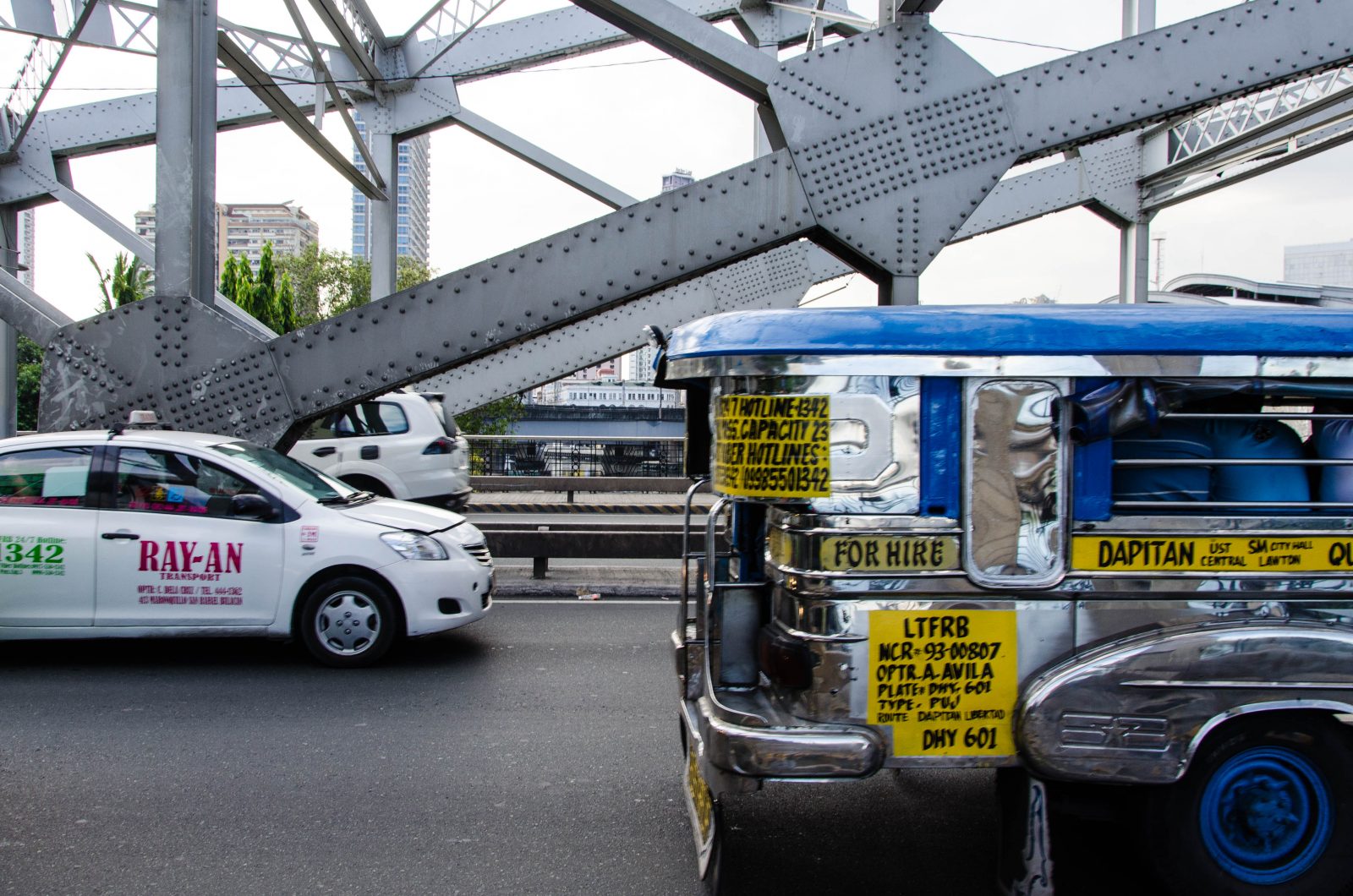 Jeepneys are run by informal route cooperatives throughout the country and are particularly useful where roads are too narrow for buses. Their base fare (₱9 / 22¢) is lower than that of buses (₱12) and the LRT (₱15), making them an affordable transit option.
Jeepneys are run by informal route cooperatives throughout the country and are particularly useful where roads are too narrow for buses. Their base fare (₱9 / 22¢) is lower than that of buses (₱12) and the LRT (₱15), making them an affordable transit option.
The many informal layers of transit are a testimony to local resourcefulness in light of under-capacity public infrastructure. I felt highly mobile in Manila, sometimes even more so than in Toronto or New York, where chunks of the city are only accessible by one transit route, so if I missed the bus or subway, my only option was to wait (could be an hour), walk (could be uncomfortable at night), or call a cab (could be beyond budget).
In transit, there is a globally common issue called the “first/last mile problem” (FMLM)—and Manila doesn’t really have it. When taking transit, you’ve probably noticed a setback inherent to almost all systems—it doesn’t come right to your door. The extra step of having to walk 20 minutes to the bus stop or drive to the nearest train station can discourage transit use altogether. In Manila, the first/last mile isn’t always optimal, but commuters are rarely stranded. Leaving home, if a walk to the terminal wasn’t ideal, I could always hail a tricycle pedicab on the street corner.
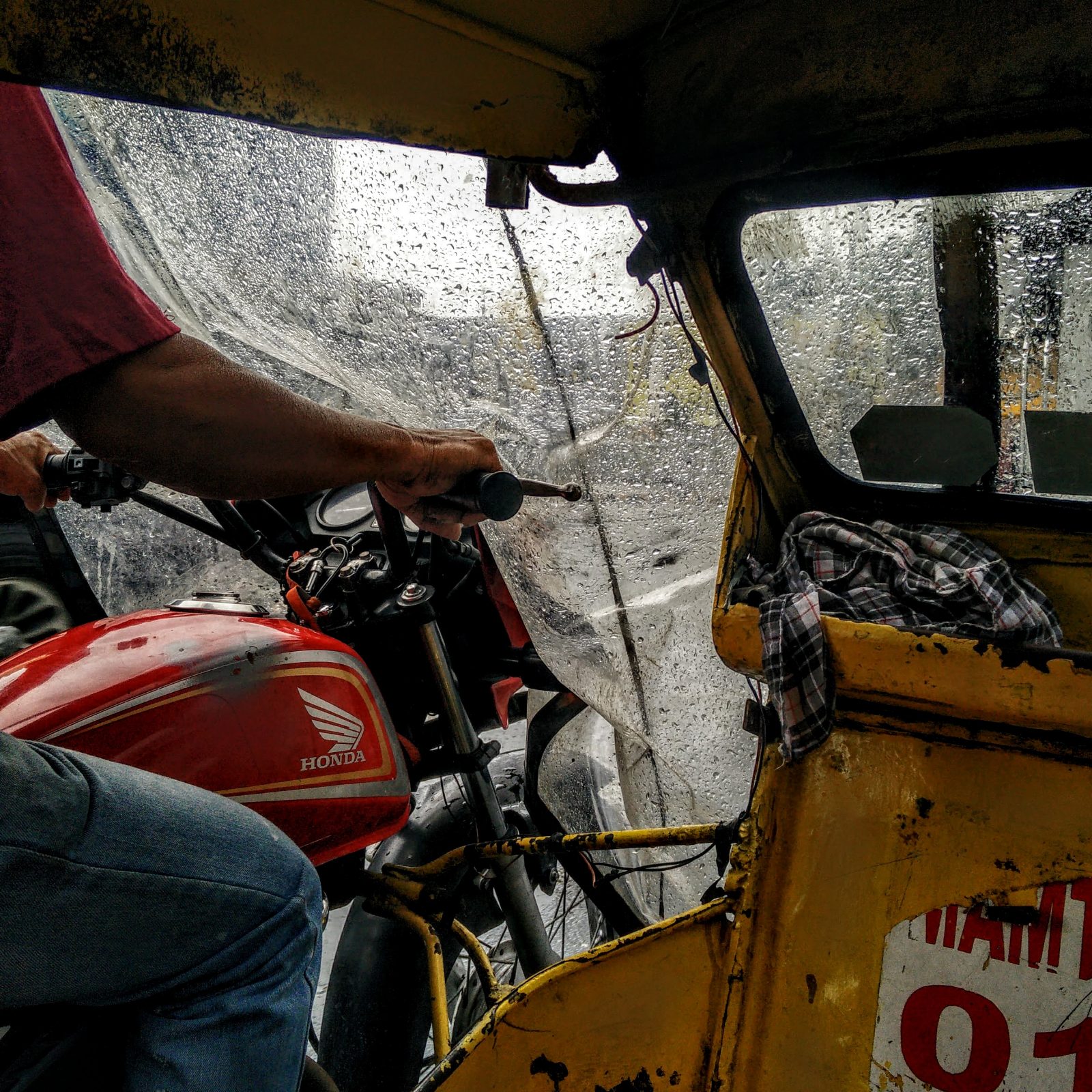 Challenging the “first/last mile problem.” Instead of walking 30 minutes to the nearest terminal in the rain, I could take a tricycle pedicab for ₱8 (19¢).
Challenging the “first/last mile problem.” Instead of walking 30 minutes to the nearest terminal in the rain, I could take a tricycle pedicab for ₱8 (19¢).
Despite being well-connected, Metro Manila is not necessarily connected well. A good transit system offers a menu of options to meet urban dwellers’ various needs. The city has a large menu, but not always of the quality people want to order. Choosing the bus can mean lining up for an hour, riding a jeepney can involve sitting thigh-to-thigh in tropical heat, and picking the MRT can be like squeezing into a sardine can.
For reasons of convenience (and status), those who can afford to, generally buy a motorcycle or car. About 25,000 private vehicles are added to the roads monthly. Locals constantly talk about how traffic is worsening, and often blame it on transit vehicles. However, cars and motorcycles make up 70 percent of total vehicle volume on major roads despite only 19 percent of individuals using them.1
After World War II, Manila was rebuilt as a low-density urban area, much like a sprawling American city. But today it is megacity, and Manila proper is the densest city in the world.2
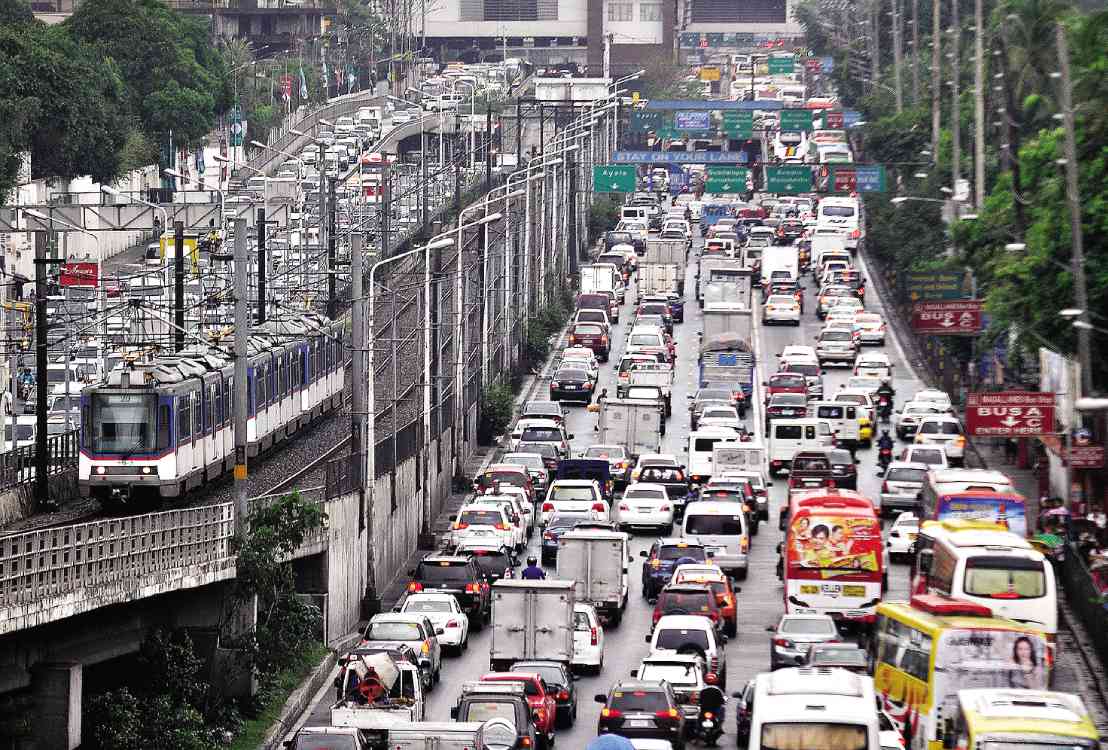 EDSA, Metro Manila’s major thouroughfare, carries 250,00 vehicles in each direction on weekdays. (Image source: Philippine Daily Inquirer, 2015)
EDSA, Metro Manila’s major thouroughfare, carries 250,00 vehicles in each direction on weekdays. (Image source: Philippine Daily Inquirer, 2015)
As attention remains fixed on traffic, public administration simply prohibits perceived vehicular obstacles such as bus stops and pedestrian crosswalks. Street-level crosswalks are exchanged for pedestrian over- and underpasses. Roads are widened and sidewalks gradually disappear. All this is done in favor of private vehicles even though over 80% of people don’t use them. And ultimately, because of induced demand, the widening and extending of major roads causes an increase in traffic.3
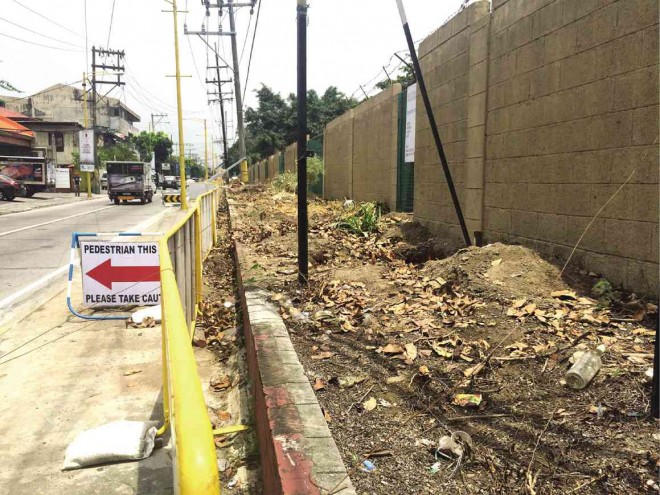 A previously tree-lined sidewalk cleared of ‘obstructions’ in preparation for a road-widening project. Goodbye sidewalk. (Image source: Philippine Daily Inquirer, 2015)
A previously tree-lined sidewalk cleared of ‘obstructions’ in preparation for a road-widening project. Goodbye sidewalk. (Image source: Philippine Daily Inquirer, 2015)
The reality is that urban density and the automotive city don’t work well together. A shared public realm is key to every city, and this extends to transportation. When decisions about the urban landscape are made, the average urbanite needs to be the priority. A lot of public work needs to be done to make transit a dignified and desirable preference over private vehicles in Metro Manila. As the city continues to develop and inevitably densify further, its existing affordable, multimodal network needs to be built upon rather than pushed aside.
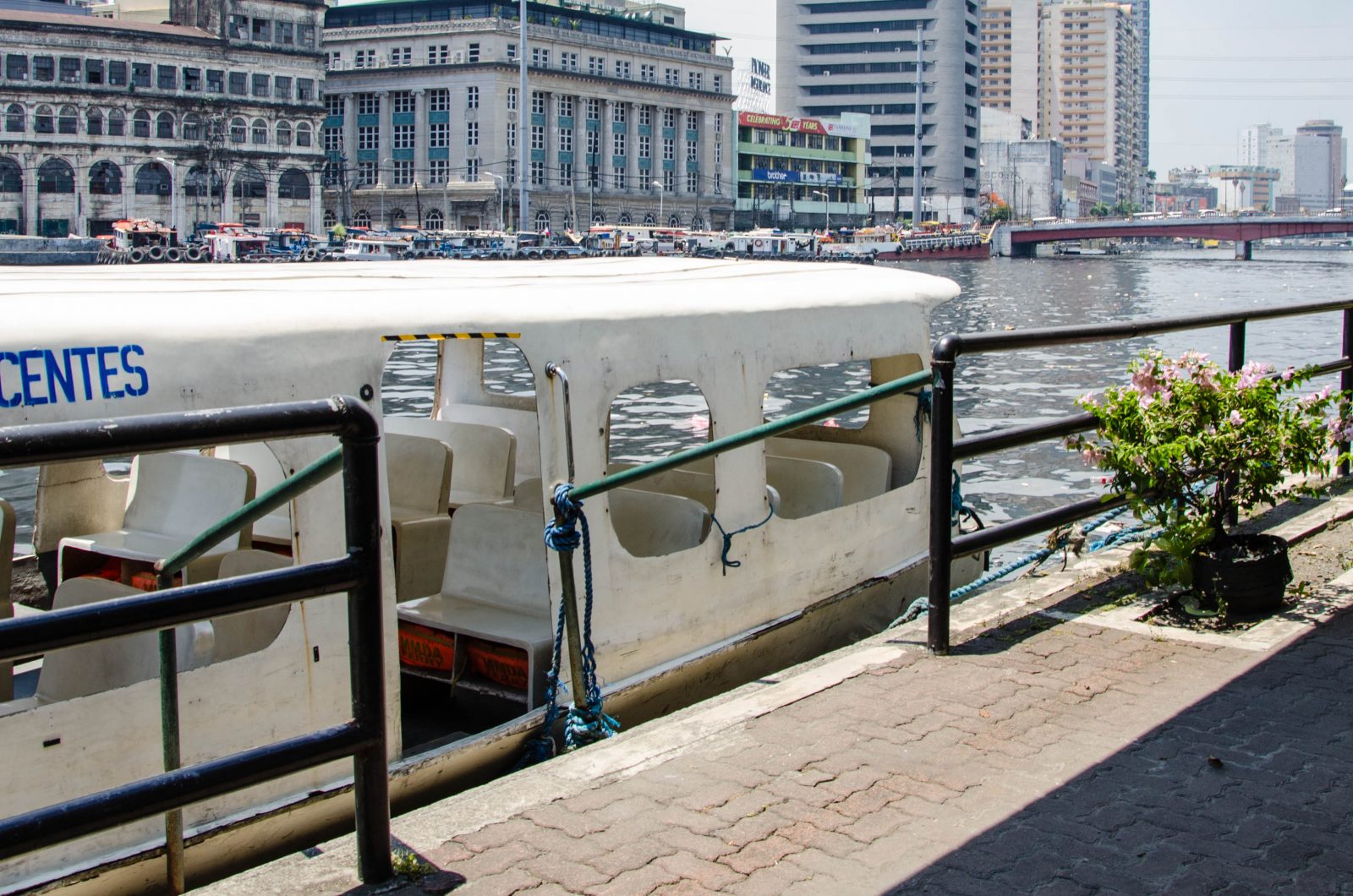 Traffic is heavy between the historic city and central business district (like everywhere else). Though unconventional, taking the ferry (₱40 / 96¢) instead of using a ride-hailing app (₱400 / $9.60) reduced the travel time for my 12 kilometer journey from 2 hours down to 30 minutes.
Traffic is heavy between the historic city and central business district (like everywhere else). Though unconventional, taking the ferry (₱40 / 96¢) instead of using a ride-hailing app (₱400 / $9.60) reduced the travel time for my 12 kilometer journey from 2 hours down to 30 minutes.
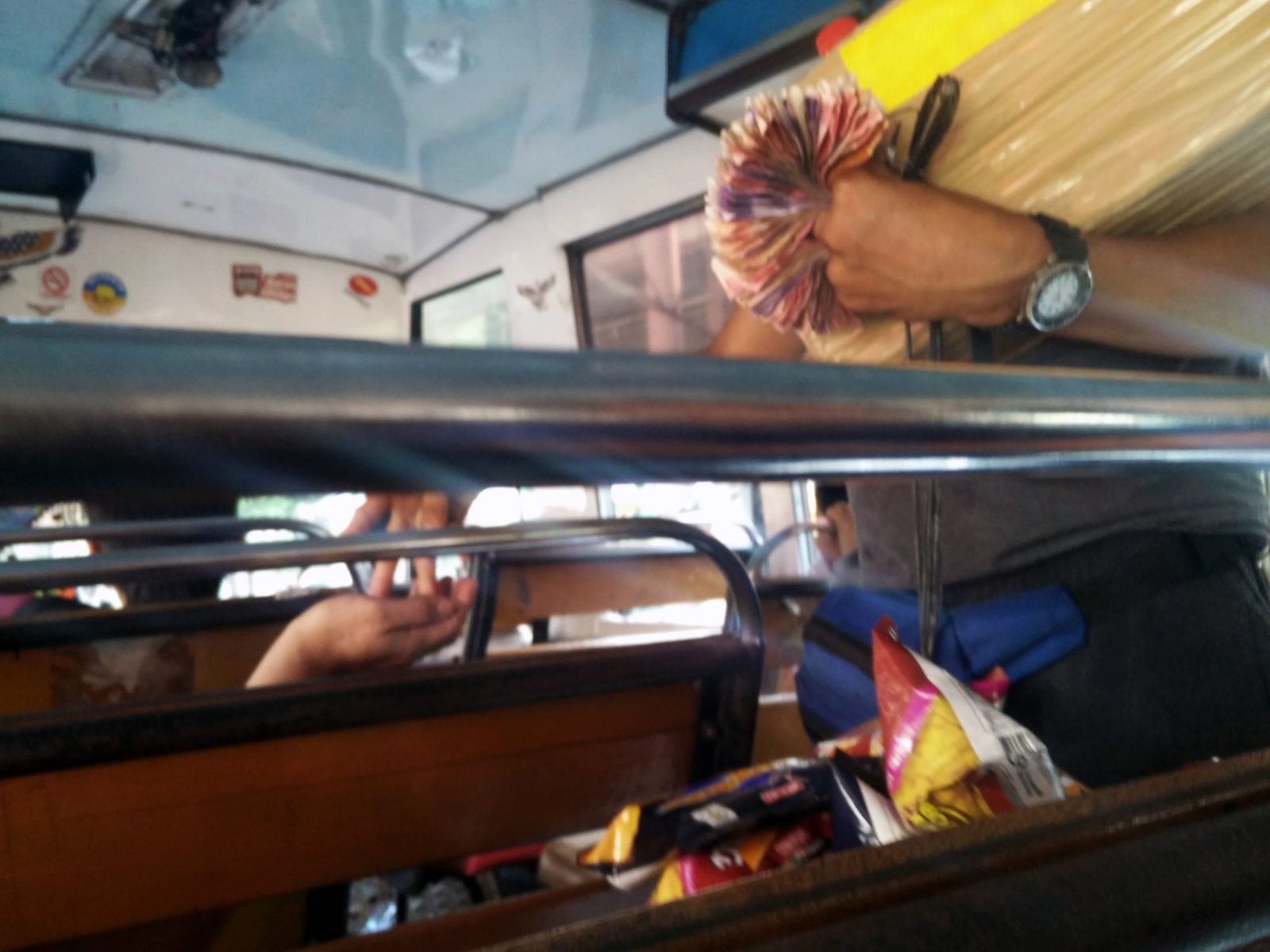 Getting hungry while stuck in rush hour traffic? Because buses are privately owned (and sometimes publicly certified), drivers and conductors can choose to let vendors board to sell refreshments—everything from bottled water to chips to eggs.
Getting hungry while stuck in rush hour traffic? Because buses are privately owned (and sometimes publicly certified), drivers and conductors can choose to let vendors board to sell refreshments—everything from bottled water to chips to eggs.
[1] Joel E. Zurbano, “Metro Crowded with 2.5m Autos.” Manila Standard, July 26, 2015. manilastandard.net/news/metro/183101/metro-crowded-with-2-5m-autos.html.
[2] “About Manila.” Lungsod ng Maynila. Mar 3, 2017. web.archive.org/web/20170329113535/manila.gov.ph/government/.
[3] Duranton, Gilles, and Matthew A. Turner. The Fundamental Law of Road Congestion: Evidence From Us Cities. Working paper no. 15376. National Bureau of Economic Research. Cambridge, MA, 2009. 42.
Michelle is a MArch ('20) and HBAS ('16) graduate from Waterloo's School of Architecture. She was an author & editor with BRIDGE from 2013-2019.


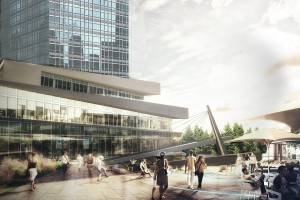
Leave a Reply